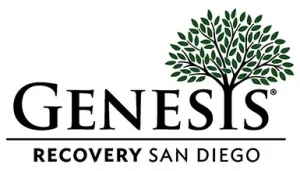Many people hold the idea that if a substance is legal, then it must be safe to use. Although this is generally true, when drugs are evaluated for their legalization to the general public, it is not necessarily taken into account each individual's personal reaction to it or its likelihood for potential abuse. Recently in California (2018), state legislation passed to make marijuana a legal substance of use. This has caused many new dispensaries to open up as well as more people using marijuana in general, with little research into its potential harm. Marijuana is thought to be non-addictive due to the recent laws of its legal use but its use is the reason many users end up seeking treatment to stop.
Marijuana is, in fact, addictive. Recent data from the National Institute on Drug Abuse (NIDA) suggests that 30 percent of users may have some degree of a marijuana use disorder. Marijuana addiction falls on a continuum, much like the addiction characteristics of other drugs, with slow progression from mild to severe (which is why addiction is known as a progressive, chronic and fatal disease). As the users tolerance (the body’s ability to withstand and need larger and larger amounts of the drug) to a substance builds, more and more of the substance is needed to get the same kind of high and in turn the addiction is more and more severe (often creating more and more damage to the individuals life along the way). People who begin using marijuana before the age of 18 especially, are 4 to 7 times more likely to develop a marijuana use disorder. Addiction rates are higher in young adults because their brains are still developing. Marijuana use changes the way normal development takes place, often altering and changing brain structures and chemicals that are needed to grow into a functioning adult. Studies also suggest that 9 percent of people who use marijuana will also become dependent on it with those numbers rising to 17 percent for those who start using as teenagers.
In the year 2015 alone, 4.0 million people in the United States met the diagnostic criteria for a marijuana use disorder with 138,000 of them going on to voluntarily seek treatment. Since the number of people who are becoming addicted to marijuana is only increasing the Drug Enforcement Administration (DEA), who is responsible for categorizing drugs and monitoring their effects on society, has still listed marijuana as a Schedule I drug. Schedule 1 substances are known as drugs with no currently accepted medical use and have a high potential for abuse. Marijuana is listed under this category with drugs like heroin, lysergic acid diethylamide (LSD), peyote and methylenedioxymethamphetamine (ecstasy). A study that was done in 2013 also found that 6,600 new people in the United States become marijuana users every day. This number continues to grow and does not take into account the states that have legalized its use since the study was done. With all of the studies and research that has been done thus far on marijuana, it is hard to see how marijuana is not addictive.
While marijuana may carry a potential for addiction, what about all the alleged benefits from its use?
There have been a few studies to date that have examined the potential medical benefits of marijuana use.
- One study found that medical marijuana helps children with controlling seizures and chemotherapy-induced nausea.
- Adult cancer patients have also been found to use medical marijuana to ease nausea.
- People with epilepsy use it to ease seizures.
- Some studies even found marijuana to reduce the misuse of opioids or other substances.
Although there appear to be some benefits of its use, most of them revolve around cancer and the dosages are monitored by doctors. A major issue with medical marijuana is that most users often do not use it under doctor supervision, nor for the proven medical reasons listed in the studies above. Since most users take marijuana on their own, the dosage and potency are not monitored like it is under a doctor’s supervision. In a recent report from NIDA, the average THC content in confiscated marijuana samples in 1990 was just under 4 percent. In 2014, this had increased to 12 percent. With an increase in unregulated potency, it is hard to say how much THC is in one dose, and due to the different forms of marijuana that can be ingested (edibles, bongs, joints, etc.), it is hard to say what exactly a dose is. This leads to tolerance levels increasing dramatically as well as a variety of symptoms of what encompasses a “high”.
In summary, each person has a different reaction to different amounts of marijuana use. Some people may use marijuana and have no adverse reactions to it, while others may use it and rapidly develop a marijuana addiction. When deciding to use marijuana for medical purposes or even recreational use, it is best to do research on how it may impact your body and your life. Even though it is legal in California (at a state level) it is still illegal under federal law and considered a Schedule 1 substance. The legalization of marijuana at a state level does not mean that it does not carry a potential for addiction. If an addiction has already started, it is best to seek professional help and treatment may be needed.
Marijuana can become addictive if treatment isn’t put into place but recovery is possible. Call Genesis Recovery at 619-717-7319 to learn more about our unique treatment programs.
